
Ibrahim Khan Lodi was the last Sultan of the Delhi Sultanate, who became Sultan in 1517 after the death of his father Sikandar Khan Lodi. He was the last ruler of the Lodi dynasty, reigning for nine years until 1526, when he was defeated and killed at the Battle of Panipat by Babur's invading army, giving way to the emergence of the Mughal Empire in India.

The Second Battle of Panipat was fought on 5 November 1556, between Akbar and the king of Delhi, Hemu. Hemu had conquered Delhi and Agra a few weeks earlier by defeating Mughal forces under Tardi Beg Khan in the battle of Delhi and crowned himself Raja Vikramaditya at Purana Quila in Delhi.

Sher Shah Suri, often referred to as Sultan Adil, was the founder of the Sur Empire in India. He was the regent and later sole ruler of Bihar from 1529—1540 until he defeated the Mughal Empire in 1540, founding the Sur Empire, and establishing his rule in Delhi, crowning himself as Emperor. After his accidental death in 1545 CE, his son Islam Shah became his successor. The influence of his innovations and reforms extended far beyond his brief reign. In his reign, he remained undefeated in battle, being renowned as one of the most skillful Afghan generals ever produced.

Panipat is a historic city, located in Haryana, India. It is 95 km north of Delhi and 169 km south of Chandigarh on NH-1. The three major battles fought in 1526, 1556 and 1761 took place near the city. The city is famous in India as the "City of Weavers" and "Textile City". It is also known as the "cast-off capital" due to being "the global center for recycling textiles". Panipat is also home to a variety of manufacturing industries including wool and cotton milling, saltpeter refining, and the manufacture of glass, electrical appliances, and other products. Panipat is included in the list of Critically Polluted Industrial Areas in India. The Comprehensive Environment Pollution Index (CEPI) of the city is 71.91 as against 88.50 of Ankaleshwar (Gujarat). The fatal field of Panipat is the site of three battles that changed the course of India's history, resulting in the creation and confirmation of the Mughal Empire. The third battle led to the decisive defeat of the Maratha Confederacy in North India, which became a dominating power in Delhi by then and paved the way for the British colonial rule of India.

The Bangash, Bungish, Bangaš or Bangakh are a tribe of Pashtuns, inhabiting their traditional homeland, the Bangash district which stretches from Kohat to Tall in Hangu and Spīn Ghar, Kurram in Khyber Pakhtunkhwa, Pakistan. They also live as a smaller population in Dera Ismail Khel, Bannu while also a smaller population of Bangash inhabit mainly Gardez, Paktia and around the Lōya Paktia region of Afghanistan.
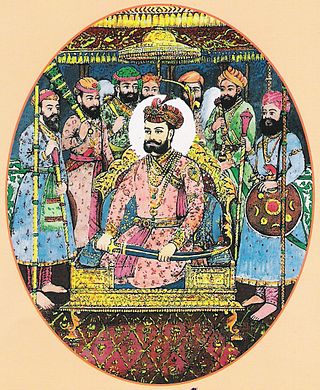
Hemu was an Indian emperor who previously served as a general and Wazir of Adil Shah Suri of Sur Empire during a period in Indian history when Mughals and Afghans were vying for power across North India. He fought Afghan rebels across North India from Punjab to Bengal and Mughal forces of Humayun and Akbar in Agra and Delhi, winning 22 battles for Adil Shah Suri.

The Lodi dynasty was the ruling dynasty of the Sultanate of Delhi from 1451 to 1526. It was the fifth and final dynasty of the Delhi Sultanate, and was founded by Bahlul Khan Lodi when he replaced the Sayyid dynasty.
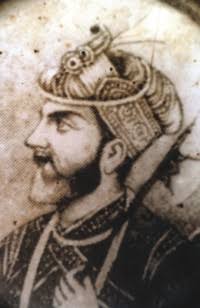
Isa Khan was the leader of the 16th-century Baro-Bhuiyan chieftains of Bengal. During his reign, he successfully unified the chieftains of Bengal and resisted the Mughal invasion of Bengal. It was only after his death that the region fell totally under Mughal control. He remains an iconic figure throughout West Bengal and Bangladesh as a symbol of his rebellious spirit and unity.
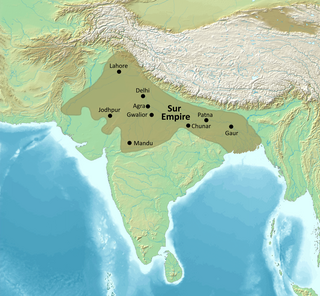
The Sur Empire was an empire ruled by the Afghan-origin Sur dynasty in northern India for nearly 16 or 18 years, between 1538/1540 and 1556, with Sasaram serving as its capital. It was founded by Sher Shah Suri.
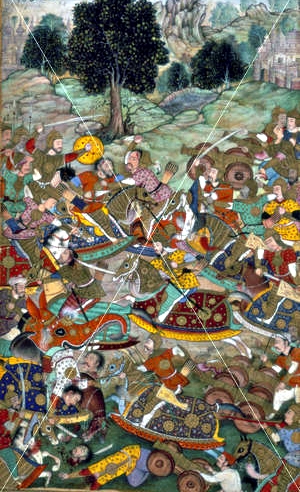
The Battle of Khanwa was fought at Khanwa on 16 March 1527. It was fought between the invading Timurid forces of Babur and the Rajput Confederation led by Rana Sanga for supremacy of Northern India. The battle was a major event in Medieval Indian history although Timurids won at Panipat but at the time, the sultanate at Delhi was a spent force that was long crumbling. To the contrary, Kingdom of Mewar under the able rule of Rana Sanga, had turned into one of the strongest powers of northern India. Therefore, the battle was among the most decisive battles in the Mughal conquest of northern India. It was among the earliest battles in Northern India where gunpowder was used to a great extent. The battle resulted in heavy casualties for both Timurids and Rajputs.
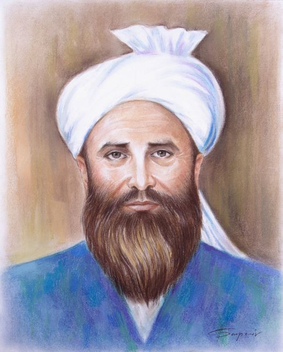
Bāyazīd Khān Ansārī, commonly known as Pīr Rōshān or Pīr Rōkhān, was an Ormur Pashtun warrior, Sufi poet and revolutionary leader. He wrote mostly in Pashto, but also in Persian, Hindustani and Arabic. His mother tongue was Ormuri. He is known for founding the Roshani movement, which gained many followers in present-day Pakistan and Afghanistan, and produced numerous Pashto poets and writers.

Sulaiman Khan Karrani was an Afghan Sultan of Bengal. He ascended to the throne after the death of his brother Taj Khan Karrani. According to the Riyaz-us-Salatin, he shifted the seat of government from Gaur to Tanda.

Bayazid Khan Karrani was the third Sultan of the Bengal Sultanate's Karrani dynasty.
The Karrani dynasty was founded in 1564 by Taj Khan Karrani, an ethnic Afghan from the Karlani tribe, hailing from Bangash district. It was the last dynasty to rule the Sultanate of Bengal.

The Army of the Mughal Empire was the force by which the Mughal emperors established their empire in the 16th century and expanded it to its greatest extent at the beginning of the 18th century. Although its origins, like the Mughals themselves, were in the cavalry-based armies of central Asia, its essential form and structure was established by the empire's third emperor, Akbar. The regular forces mainly recruited and fielded by Mansabdar officers.

The Battle of Rajmahal took place between the Mughal Empire and the Karrani Dynasty that ruled the Sultanate of Bengal in the 16th century. The battle resulted in a decisive victory for the Mughals. During the battle, the last Sultan of Bengal, Daud Khan Karrani, was captured and later executed by the Mughals.
Khawāja Uthmān Khān Lōhānī, popularly known as Khwaja Usman, was a Pashtun chieftain and warrior based in northeastern Bengal. As one of the Baro-Bhuyans, he was a zamindar ruling over the northern parts of Bengal including Greater Mymensingh and later in South Sylhet. He was a formidable opponent to Man Singh I and the Mughal Empire, and was the last of the Afghan chieftains and rulers in Bengal. His defeat led to the surrender of all the remaining Pashtuns as well as the incorporation of the Sylhet region into the Bengal Subah. He is described as the most romantic figure in the history of Bengal. His biography can be found in the Baharistan-i-Ghaibi, Tuzk-e-Jahangiri as well as the Akbarnama.
Bayazid of Sylhet, also called Bayazid Karrani II, was a ruler in Sylhet during the early 17th century, in what is present-day Bangladesh. A prominent member of the Baro-Bhuiyan, Bayazid led military opposition against the Mughal Empire's expansion into eastern Bengal. His surrender following a sanguineous battle in 1612 ultimately resulted in their annexation of Sylhet.

Ismail Khan Lodi (Persian: اسماعیل خان لودی; also known by his daak naam Khanja Khan, was a Pashtun general of the Mughal Empire and a former viceroy of Odisha. He also served under the Karrani dynasty of the Sultanate of Bengal.












